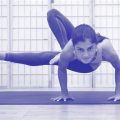Yoga for Special Populations: Key Insights and Essential Considerations
Introduction
Yoga has gained global popularity as a holistic practice that promotes physical, mental, and emotional well-being. While it’s often viewed as a one-size-fits-all discipline, certain populations require specialized approaches to maximize the benefits and ensure safety. This article delves into the unique considerations for practicing yoga in special groups such as children, pregnant women, seniors, individuals with disabilities, and those with chronic illnesses. We will examine the historical evolution of adaptive yoga practices, the current landscape, and explore how these tailored approaches can enhance accessibility for everyone.
Key Concepts
Yoga can be adapted to suit various populations with unique needs. The core principles remain the same, but modifications in poses, breathing techniques, and meditation practices allow people to engage at their level of comfort and ability. Understanding the following key concepts is vital when addressing special populations:
- Adaptive Yoga: Adjusting postures and sequences to suit an individual’s specific physical and mental conditions.
- Restorative Yoga: A gentle practice that promotes relaxation and healing through supported postures.
- Trauma-Sensitive Yoga: An approach focused on safety and empowerment, often used in therapeutic settings.
- Chair Yoga: A form of yoga performed while sitting or using a chair for support, ideal for those with mobility issues.
- Inclusive Yoga: Practices designed to make yoga accessible for all, regardless of physical ability, age, or experience level.
Historical Context
Yoga’s origins date back thousands of years, with its roots in ancient Indian philosophy. However, it was not until the 20th century that yoga began to be adapted for special populations. In the 1960s, teachers such as B.K.S. Iyengar introduced the use of props to make postures more accessible, laying the foundation for modern adaptive yoga. The rise of therapeutic yoga practices in the 1990s further cemented the idea that yoga could be a valuable tool for people with physical and mental challenges.
Today, adaptive and inclusive yoga programs are widely available, addressing a range of needs from prenatal yoga to yoga for individuals with PTSD or those recovering from surgery.
Current State Analysis
Yoga for special populations has evolved into a structured and evidence-based practice, recognized by healthcare professionals and integrated into wellness programs worldwide. However, challenges remain in terms of accessibility, availability of qualified instructors, and ensuring the safety of participants. Current trends in the field include:
- Research-Driven Practices: There is increasing scientific interest in yoga for special populations, with studies demonstrating its benefits for conditions such as anxiety, depression, chronic pain, and cardiovascular health.
- Increased Demand for Teacher Training: More yoga instructors are seeking specialized training to better serve diverse populations, including courses in trauma-informed yoga, yoga for seniors, and yoga for children.
- Integration with Healthcare: Yoga is being integrated into physical therapy, rehabilitation, and mental health treatment plans, with healthcare providers referring patients to yoga programs.
Practical Applications
Tailoring yoga to special populations requires careful attention to both physical limitations and psychological needs. Below, we outline specific guidelines for different groups:
1. Yoga for Children
- Focus on short, playful sequences to hold attention.
- Incorporate storytelling or themes to make the practice engaging.
- Encourage body awareness and self-regulation through breath control.
2. Prenatal Yoga
- Avoid poses that involve lying flat on the back after the first trimester.
- Focus on strengthening the pelvic floor and reducing lower back pain.
- Include gentle stretching to ease tension in the hips, lower back, and shoulders.
3. Yoga for Seniors
- Use props like chairs, bolsters, and straps for support.
- Modify poses to accommodate joint stiffness or arthritis.
- Focus on balance, flexibility, and gentle strength-building exercises.
4. Yoga for Individuals with Disabilities
- Offer modifications to traditional poses or use assistive devices.
- Emphasize breathwork and meditation if physical postures are limited.
- Ensure the practice space is accessible (e.g., wheelchair access).
5. Yoga for Individuals with Chronic Illnesses
- Tailor sessions to energy levels, especially for those with conditions like fibromyalgia or chronic fatigue syndrome.
- Incorporate restorative and gentle flow sequences.
- Encourage mindfulness to help manage symptoms and reduce stress.
Case Studies
Below is a table highlighting real-world examples of how yoga has been successfully adapted for different populations:
| Group | Adaptation | Outcome |
|---|---|---|
| Seniors with arthritis | Use of chair yoga and gentle stretching | Increased mobility, reduced pain, and improved mental well-being |
| Children with ADHD | Short sequences with breathwork | Improved focus, self-regulation, and calmness |
| Prenatal women | Modified poses with focus on pelvic floor strength | Reduced lower back pain, increased stamina during labor |
| Veterans with PTSD | Trauma-sensitive yoga with a focus on safety | Reduced symptoms of anxiety, better emotional regulation |
| Individuals with multiple sclerosis | Adapted sequences for strength and flexibility | Improved balance and reduced muscle spasms |
Stakeholder Analysis
Yoga for special populations involves multiple stakeholders, each with distinct concerns and roles. Understanding these perspectives is key to developing successful programs.
- Healthcare Providers: Interested in yoga as a complementary therapy to traditional medical treatments.
- Yoga Instructors: Require specialized training to safely guide individuals with unique physical or mental challenges.
- Patients/Participants: Seek accessible, safe, and effective practices that cater to their specific needs.
- Policy Makers: May be involved in funding or supporting yoga programs in public health initiatives.
- Researchers: Focused on studying the efficacy of yoga interventions for different populations.
Implementation Guidelines
For successful implementation of yoga programs aimed at special populations, the following guidelines should be adhered to:
- Training and Certification: Ensure that instructors are trained in adaptive yoga techniques and understand the medical implications of working with diverse populations.
- Customized Programming: Develop tailored programs that address the specific needs of the group, including modified sequences, alternative poses, and appropriate breathing exercises.
- Safety Precautions: Screen participants for contraindications and ensure medical clearance for those with chronic conditions.
- Regular Feedback: Continuously gather feedback from participants to make adjustments and improvements.
- Collaboration with Healthcare Professionals: Partner with healthcare providers to ensure yoga is integrated into broader wellness and treatment plans.
Ethical Considerations
Ethical concerns in yoga for special populations are centered around ensuring accessibility, safety, and respect for participants’ boundaries. Key considerations include:
- Informed Consent: Ensure that participants understand the potential benefits and risks of the practice.
- Autonomy and Empowerment: Encourage participants to listen to their bodies and make modifications as needed without pressure to conform to standard poses.
- Inclusivity: Ensure that yoga spaces are welcoming to people of all abilities, ages, genders, and backgrounds.
Limitations and Future Research
While yoga for special populations has shown promise in improving physical and mental well-being, there are still limitations that require further exploration:








